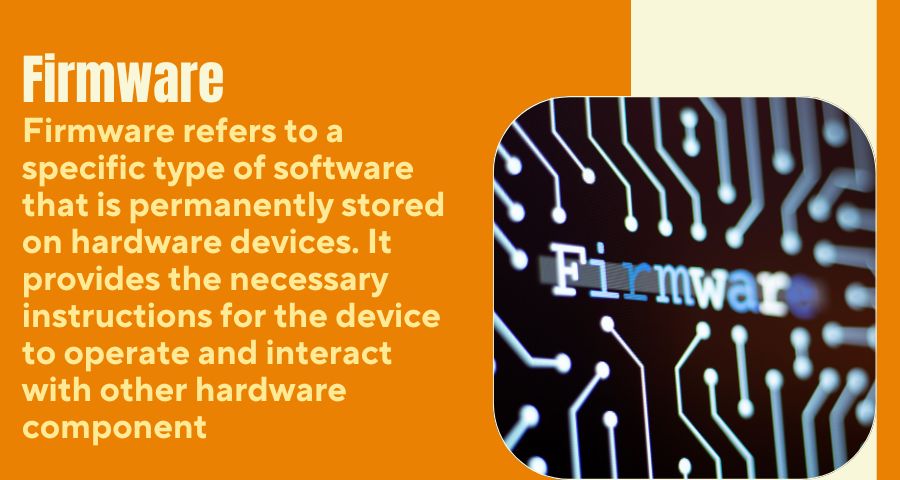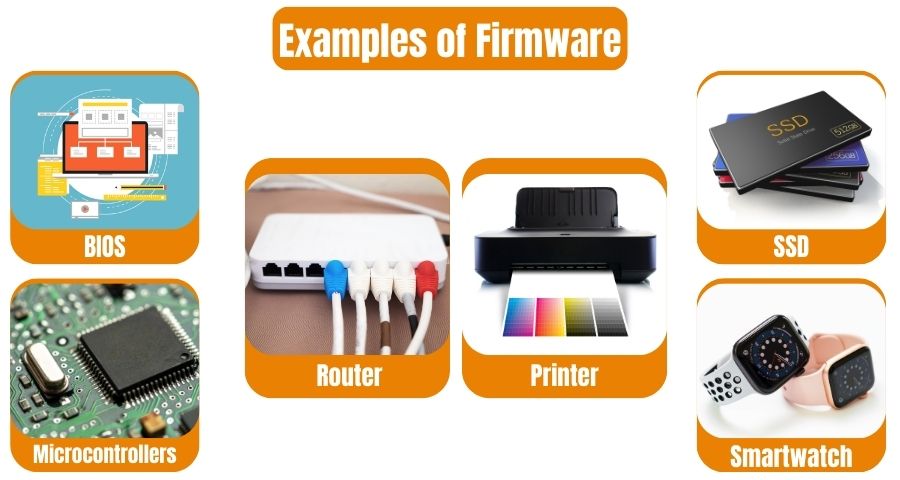Firmware refers to a specific type of software that is permanently stored on hardware devices. It provides the necessary instructions for the device to operate and interact with other hardware components. Firmware serves as the foundational software embedded within hardware devices, facilitating their operation and functionality. This article explores 10 various examples of firmware across different industries, highlighting their significance in various technological applications.
Examples of Firmware
Here are 10 examples of firmware with facts:
1. BIOS (Basic Input/Output System):
Significance: BIOS firmware initializes hardware components during the boot-up process, ensuring proper functionality of the computer system.
Fact: “BIOS stands for Basic Input/Output System and is essential for the startup of a computer.”
2. Embedded Systems Firmware (Microcontrollers):
Significance: Microcontroller firmware controls embedded systems like smart appliances, automotive systems, and industrial machinery.
Fact: “Embedded systems often rely on specialized firmware tailored to specific tasks and hardware requirements.”
3. Router Firmware (OpenWRT, DD-WRT):
Significance: Router firmware manages network communication and configuration settings, providing functionalities such as wireless connectivity and security protocols.
Fact: “Open-source firmware like OpenWRT and DD-WRT offers advanced customization options for routers, enhancing performance and security.”
4. IoT Device Firmware (Smart Thermostats, Wearables):
Significance: Firmware in IoT devices enables communication, data processing, and interaction with the Internet, contributing to the functionality of smart home devices and wearables.
Fact: “IoT device firmware often incorporates security measures to protect sensitive data and ensure safe operation.”
5. Printer Firmware (HP, Epson, Canon):
Significance: Printer firmware manages printing tasks, communication with the computer, and maintenance functions, optimizing print quality and performance.
Fact: “Firmware updates for printers may include enhancements in print speed, compatibility with new operating systems, and security patches.”

6. Solid-State Drive (SSD) Firmware:
Significance: SSD firmware controls data storage, retrieval, and management, optimizing performance, and ensuring data integrity.
Fact: “Firmware updates for SSDs may improve performance, reliability, and compatibility with new storage technologies.”
7. Smart TV Firmware (Samsung, LG, Sony):
Significance: Smart TV firmware governs user interface, connectivity features, and app compatibility, enhancing the viewing experience and enabling multimedia functionalities.
Fact: “Firmware updates for smart TVs may introduce new features, improve streaming performance, and enhance security measures.”
8. Gaming Console Firmware (PlayStation, Xbox, Nintendo):
Significance: Gaming console firmware controls gaming functionalities, system updates, and online services, providing users with an immersive gaming experience.
Fact: “Firmware updates for gaming consoles may introduce new gaming features, improve system stability, and enhance network connectivity.”
9. Digital Camera Firmware (Canon, Nikon, Sony):
Significance: Digital camera firmware manages imaging functions, settings customization, and compatibility with accessories, optimizing image quality and usability.
Fact: “Firmware updates for digital cameras may enhance autofocus performance, add new shooting modes, and improve battery efficiency.”
10. Smartwatch Firmware (Apple Watch, Samsung Galaxy Watch):
Significance: Smartwatch firmware governs various functions like fitness tracking, notifications, and app integration, offering users convenience and productivity on the wrist.
Fact: “Firmware updates for smartwatches may introduce new health features, improve battery life, and enhance connectivity with smartphones.”
Firmware plays a crucial role in the functionality and performance of diverse technological devices across industries. Understanding the significance of firmware in various applications underscores its importance in ensuring optimal operation and user experience in modern technology-driven environments.

